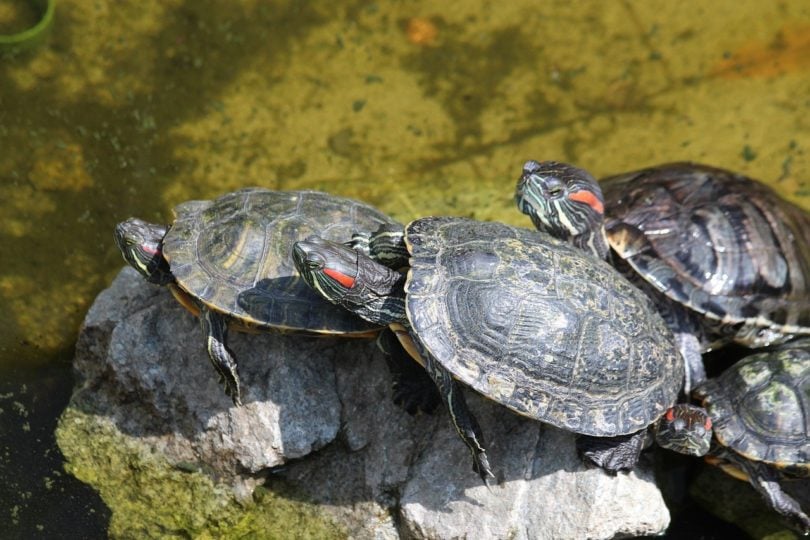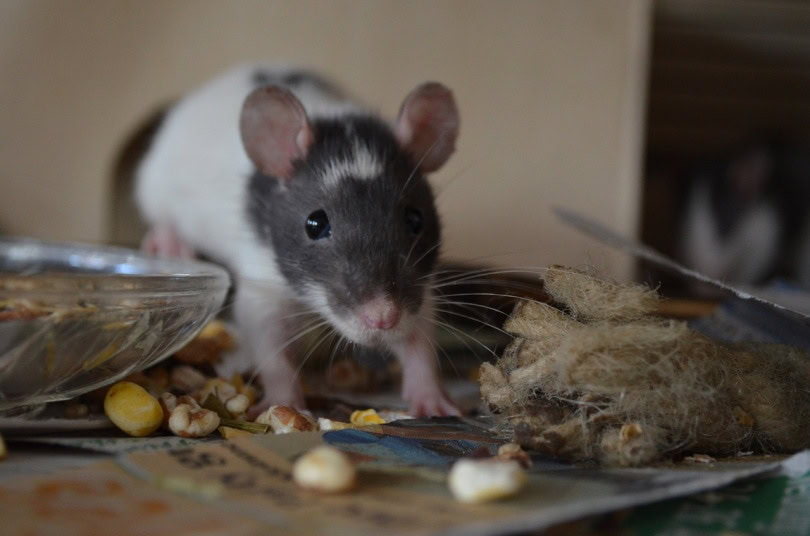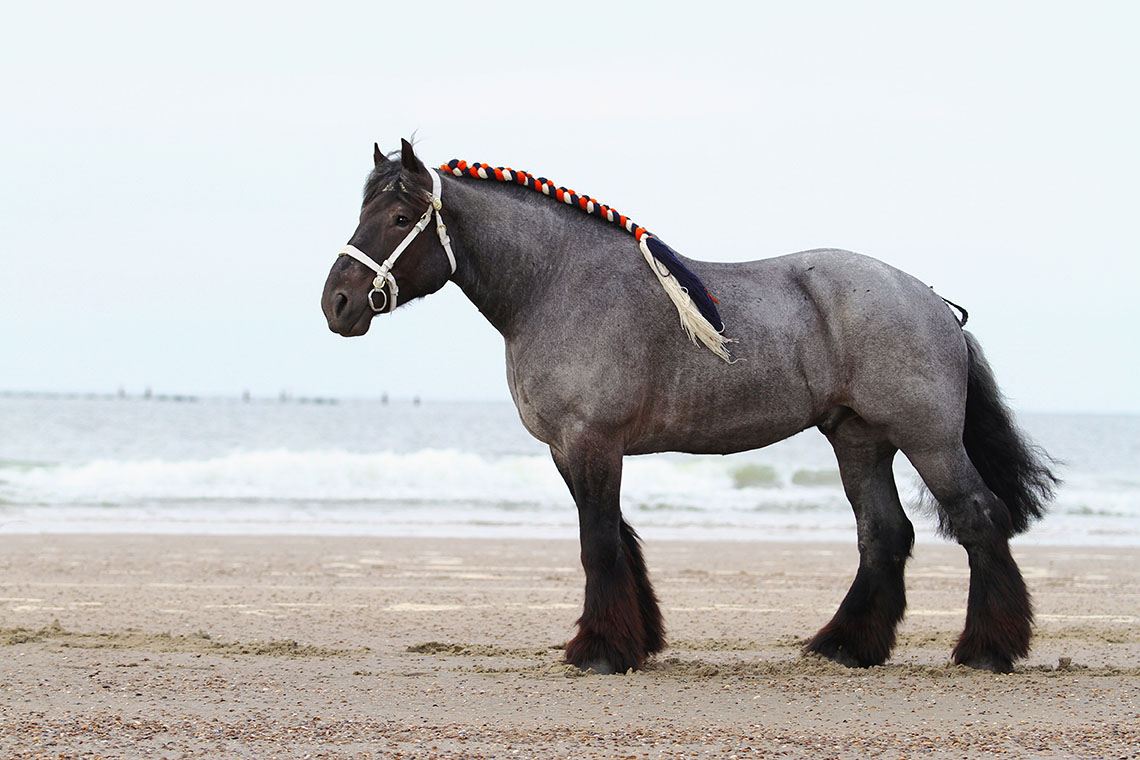VET APPROVED

The information is current and up-to-date in accordance with the latest veterinarian research.
Learn more »Click to Skip Ahead
Turtles and tortoises are known for living incredibly long lives. The red-eared slider is one of the most common pet turtles, and their lifespan fits the general expectation of longevity for turtles. So, if you have a pet red-eared slider, be prepared to have a pet for a long time. As pets, their average lifespan tends to be about around 20 years, with a confirmed record of one individual living for over 41 years.
Their true lifespan in the wild is unknown, as research has shown that their mortality rate does not increase with age. In other words, old age alone wouldn’t lead to these turtles passing away (a trait that sets them apart from many other pets). Let’s explore this fascinating concept in greater detail!

Red-Eared Sliders Lifespan
The true lifespan of a red-eared slider has not been accurately measured. Observations of these animals in the wild have revealed that, unlike most animals, their mortality rate doesn’t increase with their age. This is a trait they share with many other reptile species1. Red-eared sliders do not seem to lose immune function with age either2.
As a pet, the confirmed longevity of a red-eared slider is just over 41 years (precisely 41.3 years)3. It might be possible that some individuals without a confirmed age record may have indeed surpassed this record.
The generally accepted average lifespan of a pet red-eared slider is thought to be anywhere from 20–30 years. Interestingly, almost all mortalities of pet red-eared sliders are considered preventable, as old age alone wouldn’t be a factor for their demise.
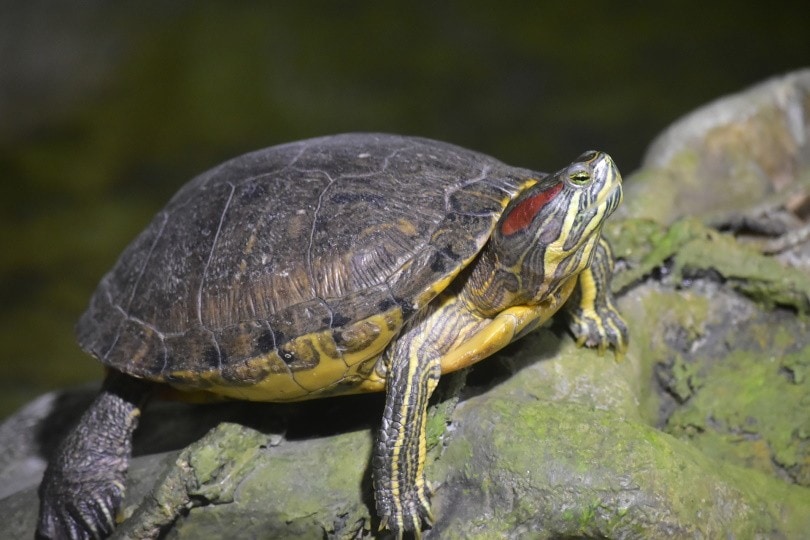
Why Do Some Red-Eared Sliders Live Longer Than Others?
When caring for your red-eared slider, you have control over many things that can help them live a longer life. Exercise, nutrition, and habitat all impact your turtle’s overall health. Red-eared sliders are also susceptible to health risks. Knowing them can help you spot the signs of illness before it becomes a bigger problem.
1. Exercise
It may seem silly to say your turtle needs exercise, but they do! Red-eared sliders need access to land and water where they can move freely. Though primarily aquatic, they do like to spend time outside the water to sunbathe or rest.
The substrate can be made of sand or gravel. It should also give them easy access to fresh, clean water. Having both gives your turtle plenty of room to exercise and move around, which gives them the mental and physical stimulation they need for optimal health.
2. Nutrition
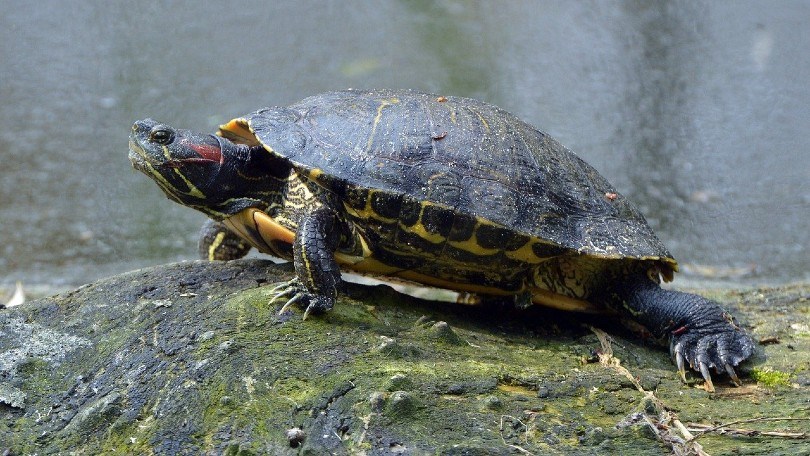
Proper nutrition is also a vital factor in a turtle’s lifespan. Veterinarians recommend feeding pet turtles turtle food supplemented with both animal protein and plant matter (red-eared sliders are omnivores). They have a higher protein requirement as juveniles than they do as adults. That being said, adults that are reproducing have different nutritional needs than those in maintenance or those who are brumating.
- Fruits: Melons, apples, berries, mangos
- Vegetables: Broccoli, squash, carrots, green beans
- Protein: Worms, fish, shrimp
Red-eared sliders should not be fed fireflies since they contain a toxin that is harmful to turtles. Onions, chocolate, and avocado are also foods that you should never feed your turtle. For a complete nutritional plan for your pet turtle, we recommend reaching out to your veterinarian for more information.
3. Habitat
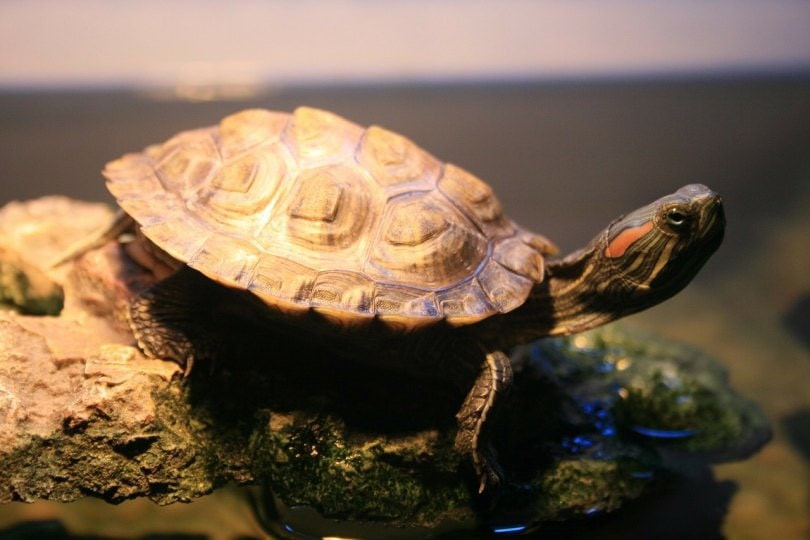
Red-eared sliders can grow quickly, and they can also grow to relatively large sizes; males can reach sizes of up to 4 inches and females can grow even larger (up to 6 inches). Therefore, they need a fairly large tank to move around in. It is recommended that at least a 50-gallon tank is used for one adult slider.
In this tank, they need land and water spaces. The land should be around ⅓ of the tank, whereas the aquatic area should comprise the other ⅔. A water depth of around 30 cm (12 inches) is advised as a minimum for these turtles, as they enjoy swimming.
The temperature should be between 22–27 oC (71.6 –80.6 oF). The water must also be kept clean, which is no small task with a red-eared slider. They use their water to eat and use as a toilet, so frequent water changes are necessary.
The habitat also needs to be kept at the proper basking temperature during the day. They require a basking spot which should be 5oC (9oF) warmer than the temperature in the rest of their habitat.
Lighting is the other key factor for a healthy turtle habitat. You need UVA and UVB light for your turtles. UVB light is critical to their metabolic process and calcium absorption. Without it, they can suffer from fatal degenerative bone and shell diseases. Red-eared sliders require broad-spectrum UVB lighting at 290–300 nm.
Present-day guidelines for red-eared sliders recommend at least a few months (3–4) every year in a secure pond, as it seems the benefits of sunlight are very crucial for their longevity and overall health. It seems the benefits of sunlight are far greater than those of a UVB light, as it also helps turtles regulate their hormonal cycles.
4. Health
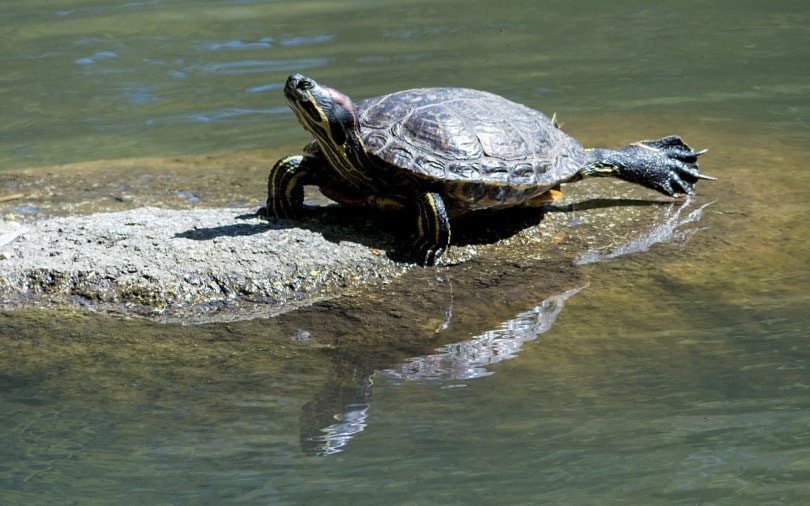
Like all pets, red-eared sliders should have regular veterinary check-ups. Your veterinarian can check your turtle for injuries and illness. Common illnesses in red-eared sliders include respiratory infections and shell injuries.
Another ailment worth mentioning is shell rot. Shell rot is an infection of the turtle’s shell. It can be caused by pathogens such as fungi or bacteria in your turtle’s environment. The infection usually shows as a light spot on the shell. It can spread to other parts of the body if not treated. It is almost always associated with poor husbandry and, though very detrimental, is something that is quite easily preventable with good pet ownership.
- See also: Do Red-Eared Slider Turtles Bite People?

Final Thoughts
Red-eared sliders can live long lives if they are properly cared for. Although their true lifespan isn’t known, 20 to 30 years is a reasonable expectation for a pet red-eared slider. Maintaining a healthy habitat, feeding them well, and monitoring health conditions are essential to turtle longevity.
- Next on your reading list: How Long Do Turtles Live? Average Lifespan, Data & Care
Featured Image Credit: Pixabay
